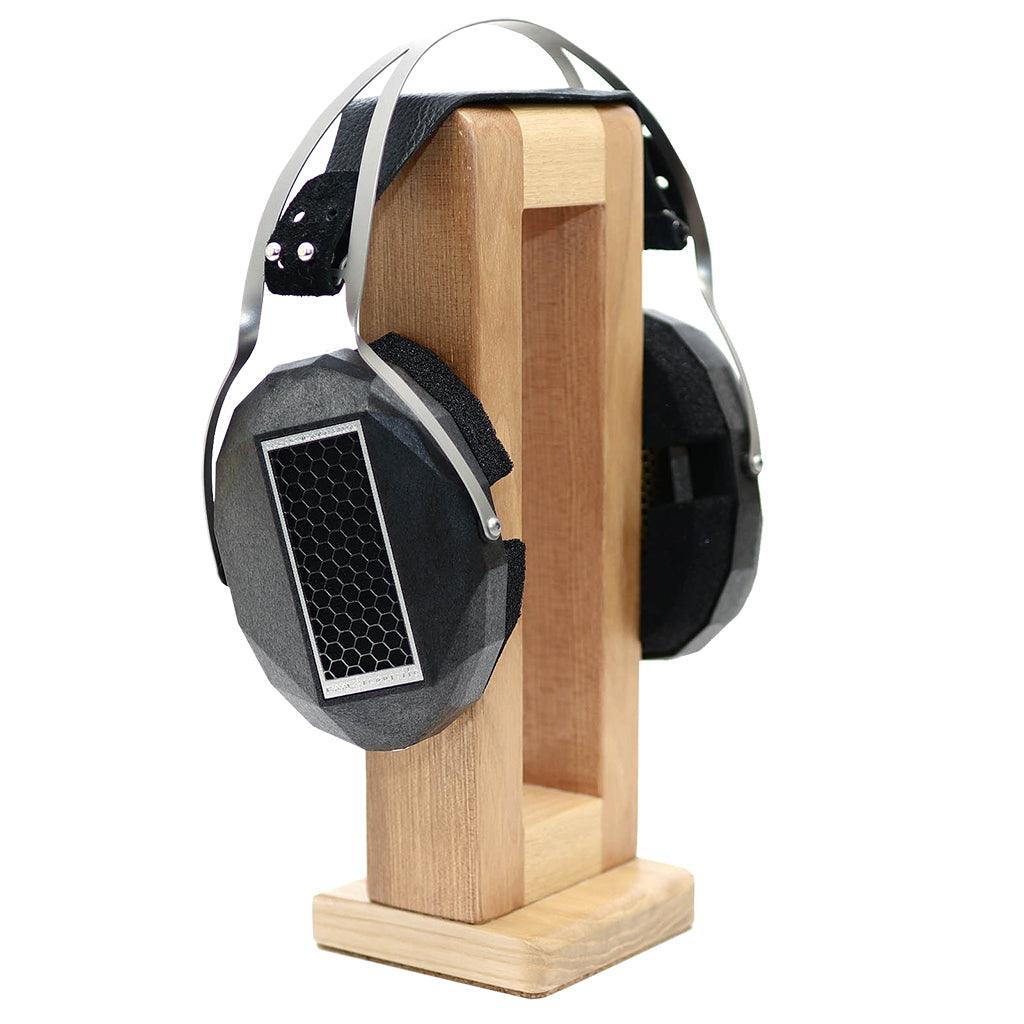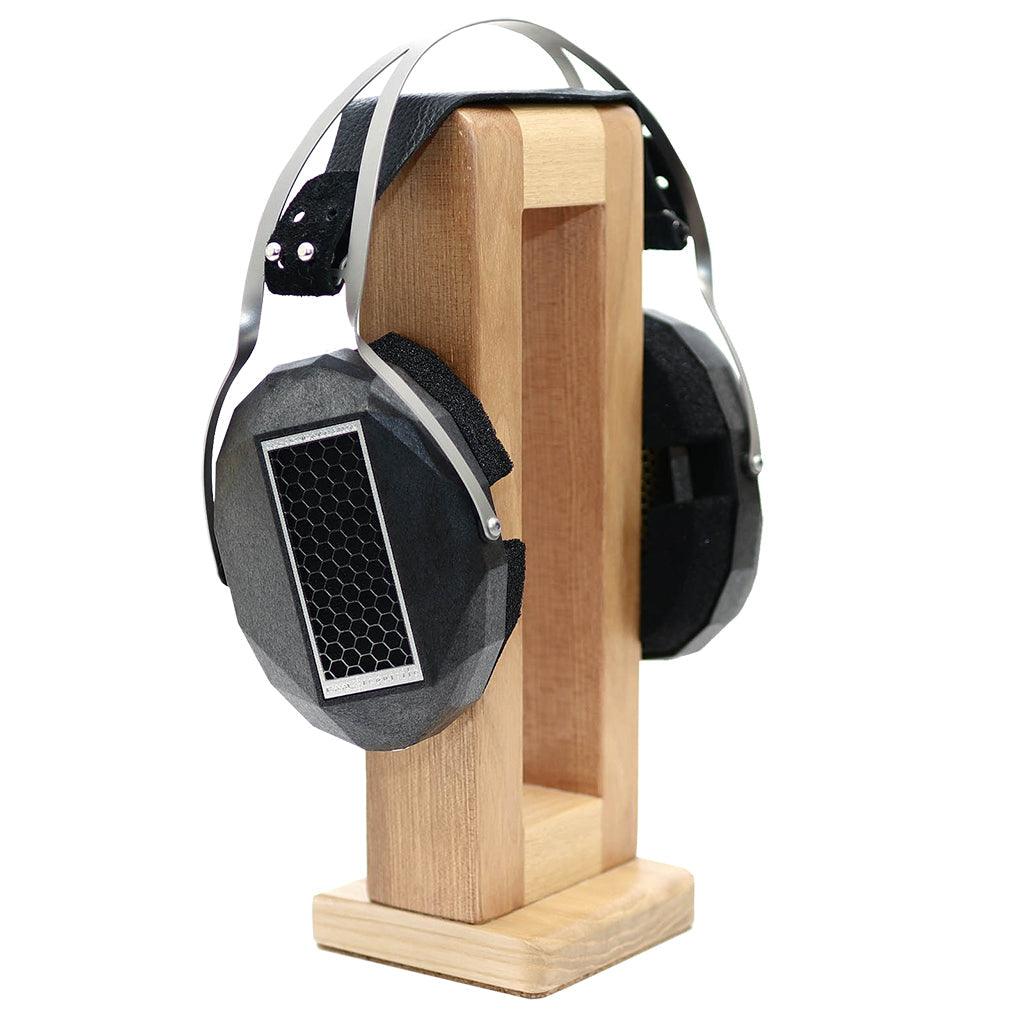RAAL-Requisite
RAAL Requisite CA-1A with TI-1b Amp Interface

RAAL Requisite CA-1A with TI-1b Amp Interface
RAAL Requisite CA-1A with TI-1b Amp Interface
Cup style
More information
Open-back headphone designs are often higher-performance but have poor noise isolation and leak sound. Closed-back designs provide better noise isolation and leak less sound.
Open-Back
Wearing style
More information
Over-ear headphones sit over your ear and surround your ear with a ring of padding. On-ear headphones are padded but rest on top of your ear. In-ear monitors are worn inside your ear canal.
Over-ear
Driver type
More information
Speakers and headphones use a device called a 'driver' to create sound. Different types of drivers have different strengths and weaknesses, but can all produce great sound. Common varieties include dynamic, planar magnetic, and electrostatic.
Ribbon
Connectivity
More information
Connectivity refers to the method in which the headphones connect to the audio source. Headphones can be either wired or wireless.
Wired
Description
The much anticipated CA-1a.
It was only a matter of time and engineering diligence before the CA-1a could see the light of day. What would seem a modest task following the lead the SR1 provided, turned out to be another significant undertaking.
Many design discoveries and repeated testing were required to follow the success of the ground breaking SR1. We knew the CA-1a had to be great. We weren’t satisfied with being a “one hit wonder!” Our future depended on it.
The CA-1a is far more than a SR1 with Circum-Aural ear pads.
An entirely new motor had to be developed. New methods of manufacturing were required. Years of R&D laid ahead of us. We faced many contradictory acoustic and mechanical cul-de-sac.
Price
As development progressed the economy digressed. This became a key concern. How to you make a headphone that performs like a $4,000 to $6,000 headphone at a price of $2,000? Well, the CA-1a is evidence that it can be done. We invite you to hear it for yourself. And please, compare it to any TOTL headphone out there. We think you’ll be surprised and rewarded with performance that doesn’t disappoint and doesn’t break the bank.
Drive Your True-Ribbon Headphones With Conventional Headphone Amps having as little as 2-Watts!
The TI-1b, Ribbon/Amp Interface
Until now, devotees of True-Ribbon listening have had a limited range of options for driving the super low-impedance & high-current demands of their much loved True-Ribbon headphones.
At last, Liberation!
The TI-1b provides access to a vast number of conventional headphone amplifiers for powering True-Ribbon headphones with as little as 2-Watts and depending on the amp and required volume, as little as 0.5-Watts of power.
In addition to headphone amps, the TI-1b bridges the gap to include the use of conventional, high-powered, 2-channel amps and mono-blocks.
A quantum leap? Yes! But let’s rewind for a moment…
True-Ribbon headphones are of very low resistance (impedance)_few tens of milliohms. About 10 times less than a headphone cable. They require very low voltage and high current. A headphone amp is incapable of driving them because the ribbon + cable impedance is far lower than 32 Ohms and a conventional headphone amp will not produce the 4-5 Amps of current required.
Originally, we developed a reliable solution requiring a 100W speaker amp with a network of resistors (in series) to the True-Ribbon headphone and thus, loading the amp with 6 Ohms. That method allows the amp to work in its normal load range and comfortably produce the necessary current True-Ribbons require.
Enter Toroidal Impedance Matching Transformers!
Transformers will convert AC signal of high-voltage/low-current into low-voltage/high-current, thusly, turning a high impedance into a low impedance (or vice versa) allowing for matching of mismatched sources and loads. This is a transformers typical duty in ribbon tweeters and tube amps, both of which we have tons of experience in designing and building
So then, what’s the Big Deal?
Tweeters, however, have their transformers mounted very close to the ribbon itself so there is no significant loss due to wire length. Using that same method with headphones, you’d be wearing 2 lbs. of transformers on your head and visiting your chiropractor on a regular basis. Simply stated, not a practical solution!
With tube amplifier output transformers, the speaker is far away, but the cable has a far lower resistance than the speaker, so again, no significant loss there. But, by that same logic, the headphone cable would have to weigh 2 lbs.
With True-Ribbon headphones, the situation is completely backwards!
Until the TI-1b, we could find no known example or solution in audio.
There were no such examples of this upside down situation.
So, we’ve had to develop our own solution…
And… it had to work flawlessly.
With headphones, a lightweight and very flexible cable is needed. This means a low cross section of the conductors, and in turn, that the cable functions as the dominant resistance/impedance in our headphone cable/ribbon driver circuit.
The cable mostly loads the impedance matching transformer, not the ribbon. In such low impedance circuits, the cable must not have excessive inductance, or the highs will drop, far too soon. Also, it must have a certain resistance per unit of length such that when we load the transformer at the secondary with that cable, we get the desired 32 or 16 Ohms at the primary. Our development brought us to the new SC2 (6ft) Standard Cable, included with the TI-1a.
The transformers themselves must have very low leakage inductance, or again, in these very low impedance circuits, the highs will be dropping too early. They must also have low capacitance, to prevent ringing in the ultrasonic range. This may potentially pose a serious problem for amplifiers and we have found that the best way to solve that is using toroidal transformers with windings made in a particular way… plus, a few additional components. These added parts won’t affect the sound, they just ensure that there are no reactive loads to create overvoltage peaks that may damage the amplifier.
Persistence Pays Off
The development took a while longer than we hoped for, but in the end, we now have a transformer based, amp to ribbon, interface with 32 and 16 Ohm inputs, with less than -100dB distortion, that can transfer 6 Watts of power, exhibits no ringing, goes far into the ultrasonic, is safe to plug-in and out of a fully cranked amp, safe to drive with headphones unplugged and grounds the static electricity of the headphones. Simply put… pure and safe transformation of any level in sound refinement of your headphone amp, into a high current, ribbon driving monster at the other end of the TI-1b!
Rarely Leave Class A
With the TI-1b, you can also use normal speaker amplifiers, in a vast range of power. From SET’s with a few Watts to whatever 100 lbs. of solid-state you have. The good thing about loading large power amps with 32 Ohms is that they will rarely leave Class A operation, even if they are Class B with forward bias, as the bias current alone is almost all the current you will need to swing lots of SPL at the headphones, so you can expect significant improvements in sound refinement of your speaker amp, with considerably less “crossover“ distortion artifacts.
Open-Baffle Compensation
For driving Open-Baffle SR1 headphones, we have provided left/right OB Compensation adapters in XLR (balanced) & RCA (Single-Ended) variants. Just plug them into either of your amps inputs (XLRs or RCAs) and plug your interconnect cable into the OB Compensation barrel. That way, whenever you select that input, you will correctly drive your SR1 True-Ribbon headphones.
Our General Recommendation
Our general recommendation is a conventional headphone amp having from 2 to 6 Watts at 32 Ohms, but we’ve been pleasantly surprised with amps as low as 0.5 Watts when the sound is right. Of course, if your listening requires high dynamic range or you like it loud, choose something closer to 6 Watts than 2 Watts.
A quantum leap, indeed!
The TI-1b is a significant development in True-Ribbon headphone technology. It’s not a copy, not a trick. This is a proper engineering that most successfully solves the compatibility challenges of True-Ribbon headphones when using conventional headphone amps.
Reviews
